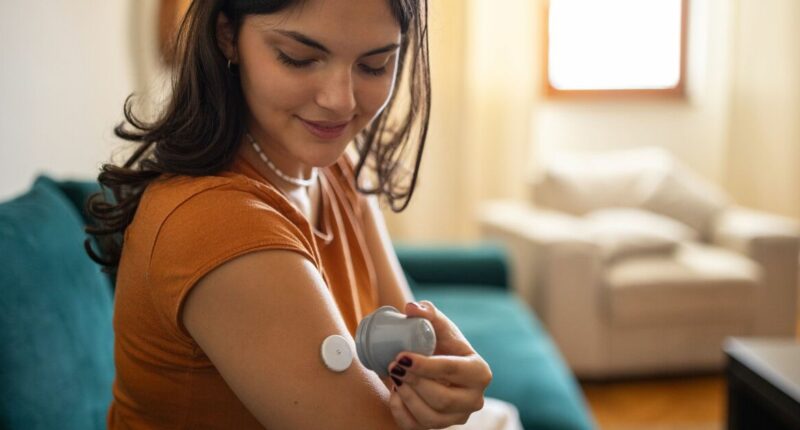Share this @internewscast.com
In the United Kingdom, approximately 6 million individuals are grappling with diabetes or pre-diabetes, often without knowing it until complications arise. The early indicators, however, are visible and manifest through changes in our skin, waistlines, sleep patterns, and energy levels.
Jade Rivers, a popular creator on TikTok, claims to have reversed her own insulin resistance and regularly shares videos encouraging others to recognize these signs and alter their lifestyle habits to achieve similar results.
In one of her videos, titled “Here’s what a body looks like that’s heading towards diabetes,” Jade highlights several warning signs, explaining their causes and offering advice on how to address them.
She opens the video with a stark reminder: “If your body looks like this, chances are you’re headed towards type 2 diabetes.”
Dark patches
Jade begins by discussing the appearance of dark patches under the arms, often indicative of acanthosis nigricans (AN). This condition, frequently associated with diabetes or pre-diabetes, results in dark, thickened, and velvety patches of skin in areas where skin folds, such as the underarms or neck, commonly occur.
Skin tags
Next, Jade points out that skin tags can also signal a potential risk for type 2 diabetes. Research, as noted by the NHS, suggests a correlation between a high number of skin tags and an increased risk of insulin resistance and diabetes. However, she cautions that while skin tags may be a marker, their presence alone does not confirm a diabetes diagnosis.
Waistline
Jade notes another red flag: a waist circumference greater than half your height. Factually, carrying excess fat around the waist (visceral fat) is a strong risk factor for type 2 diabetes, high blood pressure and heart disease – even if your BMI looks “normal”. UK guidance increasingly focuses on waist‑to‑height ratio: aim for below 0.5, with 0.6 or more indicating high risk. As a rough reference, larger waist measurements (particularly above 94 cm/37 in for men and 80 cm/31.5 in for women) signal increased cardiometabolic risk.
She also adds: “If you touch your stomach and it’s hard and dense, you’re insulin resistant because your body is [likely] stuck in fat-storing mode.”
Feet swelling
Diabetes can damage blood vessels and nerves over time, reducing circulation and leading to fluid build‑up in the lower legs and feet. Persistent swelling warrants medical review, as it can also be related to heart, kidney or venous problems – conditions that may accompany diabetes.
Sleep apnea
A vicious cycle can develop when excess weight contributes to obstructive sleep apnea (OSA). Interrupted breathing reduces oxygen levels, which can drive insulin resistance and elevated blood glucose. Poor sleep quality also raises blood pressure and strains the heart, worsening diabetes‑related risks. If you snore loudly, gasp at night, or feel unrefreshed, ask your GP about assessment for OSA.
Hump on the back of the neck
Jade mentions a “buffalo hump” – a fat pad over the back of the neck and shoulders. The symptom is technically a fat deposit on the back of the neck and shoulders and is a common sign of Cushing’s syndrome, which is caused by having too much of the hormone cortisol. High cortisol levels can be a result of prolonged high blood sugar in diabetes, which may trigger the body to accumulate fat in this area.
“And what’s crazy is you can go to your doctor but you’re just going to get a pill for each of these symptoms,” Jade says. “But these are all just signs and you can do something about it today.”
She adds: “Our bloodstream should only have a teaspoon of sugar in it at most at a time. But with our modern food environment and the foods that we’re eating, we have well over that in our bloodstream. But the key to controlling that is right here.”
Lifestyle changes – nutrient‑dense eating, regular movement, better sleep, and weight management – are powerful. Equally, NHS care is there to diagnose, support and, when appropriate, prescribe treatments.














